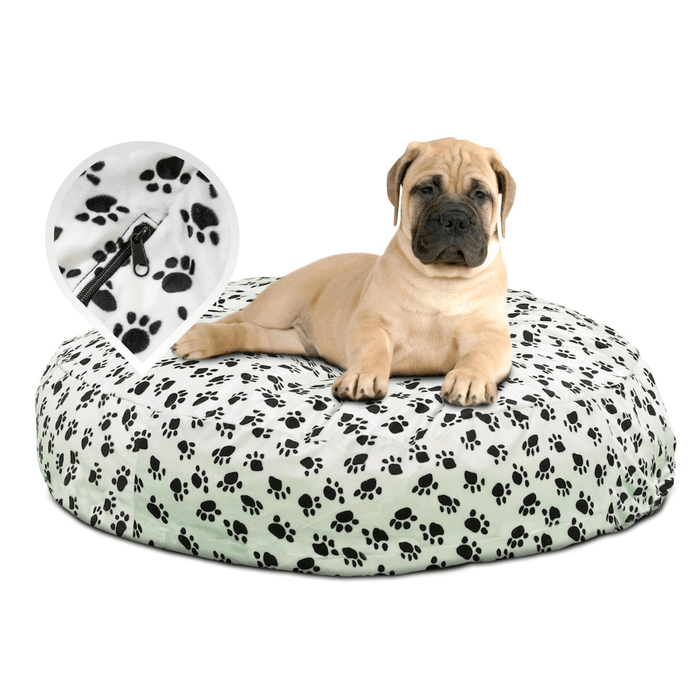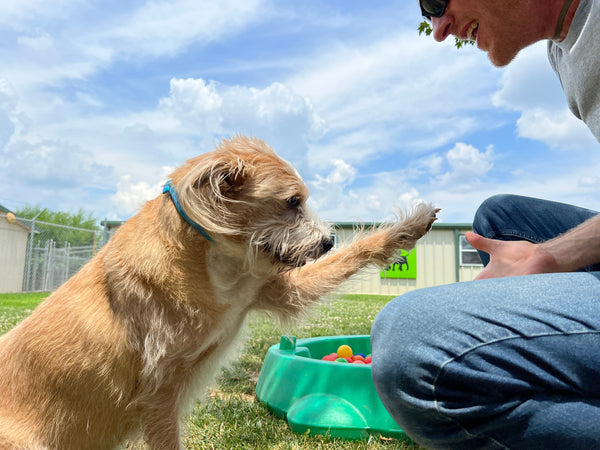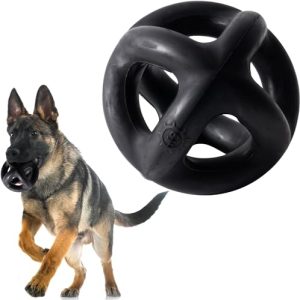Have you ever caught your dog humping his bed and wondered, “Why is he doing that?” It can be confusing, embarrassing, or even a little funny. But understanding why your dog behaves this way is important.
This habit isn’t always about what you might think. By learning the real reasons behind it, you can better care for your furry friend and keep your home peaceful. Keep reading, because what you discover might surprise you—and it could change how you see your dog’s behavior forever.

Credit: artsonlinegallery.com
Common Reasons For Humping
Dogs hump for several reasons. This behavior can seem odd or funny. Understanding why your dog humps their bed helps you respond better. Many causes are natural and not a sign of trouble. Let’s explore the common reasons behind this action.
Hormonal Causes
Hormones can drive humping behavior. Intact male dogs often hump due to high testosterone. Female dogs may hump during heat cycles. Neutered dogs might still hump, but less often. Hormones influence their natural instincts and urges.
Playful Behavior
Humping can be part of play. Puppies and young dogs use it to explore social skills. It shows excitement and energy in a fun way. Sometimes, dogs hump toys, other dogs, or their bed. It is a harmless way to express joy.
Stress And Anxiety
Stress causes some dogs to hump. It can calm them down or release tension. Changes in environment or routine may trigger this behavior. Dogs might hump more during loud noises or when alone. Humping becomes a coping mechanism for anxiety.
Seeking Attention
Dogs learn humping gets reactions from owners. They may hump to get noticed or play. This behavior can become a way to ask for interaction. Ignoring it often reduces the frequency. Giving attention for good behavior works best.
Health-related Causes
When your dog starts humping his bed, it might feel odd or even embarrassing. However, this behavior can sometimes signal underlying health issues. Understanding these health-related causes can help you respond appropriately and ensure your dog’s comfort and well-being.
Urinary Tract Issues
Dogs with urinary tract infections (UTIs) often feel discomfort or irritation in their pelvic area. This can lead to humping as a way to relieve pressure or distract from pain. If you notice frequent urination, blood in urine, or excessive licking of the genital area, a vet visit is necessary.
Have you noticed your dog acting restless or whining when trying to urinate? These signs often accompany UTIs and should not be ignored.
Skin Irritations
Itchy or irritated skin is another common cause of humping behavior. Allergies, rashes, or hot spots can cause your dog to rub against surfaces, including their bed, to ease the itch. Check for redness, hair loss, or scabs on the areas your dog frequently rubs.
Regular grooming and attention to your dog’s skin condition can prevent these irritations. If the problem persists, consulting a vet for allergy testing or medicated treatments is wise.
Parasite Infestations
Parasites like fleas or mites can make your dog extremely uncomfortable. The itching and irritation caused by these pests might prompt your dog to hump their bed as a coping mechanism. Look closely for signs such as constant scratching, biting at the skin, or visible fleas.
Effective parasite control is crucial. Using vet-recommended flea and tick preventatives can reduce this behavior and protect your dog’s health.
Behavioral Factors
Dogs show many behaviors that seem strange to us. Humping their bed is one of them. This action can signal different things about their feelings and habits. Understanding behavioral factors helps explain why your dog does this.
These behaviors often relate to how dogs express themselves and interact with their environment. Sometimes, humping is about social standing. Other times, it is just a habit or a way to burn off energy. Each reason tells a different story.
Dominance Display
Some dogs hump to show dominance. It is a way to claim control over a space or object. The bed can be seen as a prize or territory. This behavior often happens with dogs that feel the need to assert themselves.
It is not always about aggression. Sometimes, it is a simple message saying, “This is mine.” Dogs with strong personalities may do this more often.
Habit Formation
Humping can become a habit over time. Dogs repeat actions that give them comfort or relief. The bed is a familiar place, so it becomes the spot for this behavior.
Habits form when dogs feel safe and relaxed. If nothing stops the behavior, it may continue without a clear reason. Changing habits requires patience and consistent training.
Boredom And Excess Energy
Boredom often leads dogs to find their own fun. Humping can be a way to release pent-up energy. Dogs with little exercise or mental stimulation may act out this way.
Providing toys, walks, and playtime reduces boredom. When dogs are busy, they are less likely to hump their bed. This behavior is a signal that your dog needs more activity.

Credit: www.yahoo.com
How To Address Humping Behavior
Addressing your dog’s humping behavior can feel tricky, but understanding how to manage it effectively makes a big difference. This behavior might be rooted in excitement, stress, or even habit. By taking clear and consistent steps, you can guide your dog toward healthier ways to express themselves.
Training Techniques
Start by redirecting your dog’s attention the moment they begin to hump. Use a firm “No” or “Leave it,” then immediately offer a toy or engage them in a game. Consistency is key—reward calm behavior with treats or praise to reinforce what you want to see.
Try teaching basic commands like “Sit” or “Stay” to give your dog a clear focus. This helps them learn self-control and reduces unwanted behaviors. Have you noticed how a simple command can shift your dog’s energy completely?
Environmental Enrichment
Boredom often triggers humping, so keep your dog mentally and physically busy. Add puzzle toys, regular walks, and interactive play sessions to their day. These activities drain excess energy and reduce stress, lowering the urge to hump.
Consider changing up your dog’s environment by rotating toys or introducing new scents during walks. This keeps their mind engaged and curious. What new activity could you add today to keep your dog entertained?
When To See A Vet
If humping becomes excessive or seems compulsive, it might indicate an underlying health issue. Hormonal imbalances, urinary tract infections, or skin allergies can cause discomfort leading to this behavior. A vet can rule out medical causes and suggest appropriate treatment.
Also, if your dog shows signs of pain or distress during humping, don’t wait to get professional advice. Early intervention can prevent more serious problems down the line. Have you observed any other unusual behaviors alongside the humping?
Preventing Future Humping
Preventing future humping can help keep your dog calm and comfortable. It reduces stress and avoids unwanted behavior. Setting up good habits early makes a big difference.
Regular Exercise
Exercise helps your dog use up extra energy. A tired dog is less likely to hump. Take daily walks or play fetch to keep your dog active. Physical activity also improves mood and reduces anxiety.
Consistent Routine
Dogs thrive with a steady schedule. Feed, walk, and play at the same times each day. Predictable routines lower stress and confusion. A calm dog is less prone to humping due to excitement or nervousness.
Positive Reinforcement
Reward good behavior to encourage it. Praise or treats help your dog learn what is right. Avoid punishment, as it can increase stress. Gently redirect your dog’s attention when humping starts. This builds trust and better habits over time.

Credit: www.reddit.com
Frequently Asked Questions
Why Do Dogs Hump Their Beds?
Dogs hump their beds for various reasons, including excitement, stress relief, or to express dominance. It’s also a natural behavior that can be linked to hormonal changes. Observing when and why your dog exhibits this behavior can provide insights into their needs or emotions.
Is Humping Behavior Normal In Dogs?
Yes, humping is a normal behavior in dogs. It often starts during puppyhood as a form of play or exploration. Adult dogs may hump for attention or due to hormonal influences. Understanding the context can help determine if it’s a concern or just natural behavior.
How Can I Stop My Dog From Humping?
To stop your dog from humping, redirect their attention with toys or commands. Consistent training and positive reinforcement can also be effective. If the behavior is excessive, consulting a vet or professional trainer can provide further guidance.
Should I Be Concerned About Dog Humping?
Occasional humping is usually not a concern. However, if it becomes excessive or compulsive, it might indicate stress, anxiety, or medical issues. Monitoring the frequency and context can help decide if professional advice is needed.
Conclusion
Dogs hump their beds for many reasons. It can be a way to play or feel happy. Sometimes, it shows stress or excitement. Watching your dog's behavior helps you understand better. You can gently redirect them to stop if needed.
Remember, this action is common and usually not harmful. Keeping your dog calm and busy can reduce humping. Always show patience and love. Caring for your dog means knowing their habits well.

Emily Barker is the founder of ChillDogLife.com, a space dedicated to helping pup parents discover the best dog products, lifestyle tips, and cozy ideas for happier homes.
A lifelong dog lover, Emily combines her passion for pets with a knack for research to share trusted recommendations on everything from toys and furniture to health and everyday care.
Her goal is simple: to make life easier, stylish, and more joyful for dogs and the people who love them.







